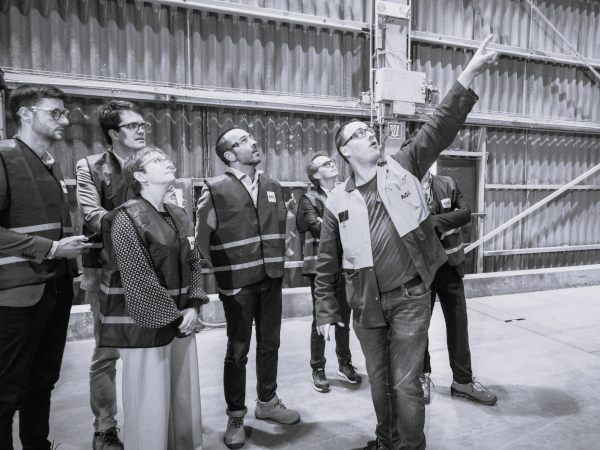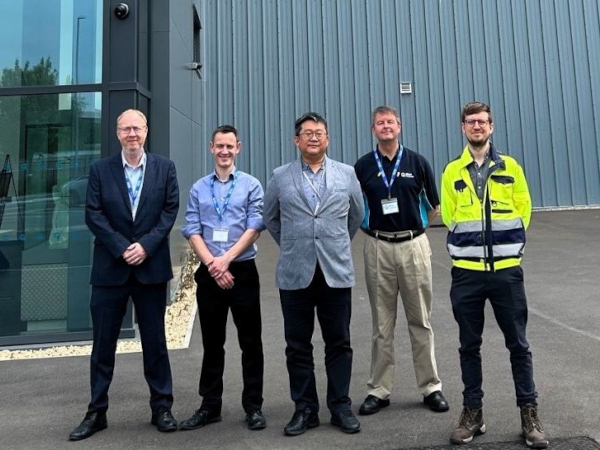Date: 13 December 2013
The transparent, airy glass steps, which are suspended in spirals, look as if they are floating in the air.This unique innovation is available at AGC studio, which offers hands-on experience of AGC’s various glass products.
.jpg)
Glass staircases have been used in numerous facilities, but many of them have glass plates at the sides of the steps to support the entire structure. Eliminating the side glass plates could enhance the transparency of a glass staircase; however, this could not be achieved until now because of the difficulty in fixing glass steps without side plates.
With the support of Hiroshi Ota, taking charge of design planning, and Jun Sato, responsible for structural design, AGC successfully created suspended glass steps that stand unaided. The durability and other aspects of this structure have been tested and verified using a full-size model based on precise structural calculations. Incorporating the unique characteristics of glass, excellent light transmission and structural strength, the staircase makes visitors feel as if they are walking in the air.
In addition, AGC’s Leoflex™ is used for the curved handrails of the staircase, which is the first case that the chemically strengthened specialty glass is used as a building material. With Leoflex, a thin but strong and crack-resistant glass, AGC has created safe, lightweight and transparent staircase rails. Taking advantage of its thinness and flexibility, Leoflex can be installed without any prior bending work. The curved handrails were created simply by bending two sheets of flat glass laminated together.
AGC will continue to propose new applications for glass materials that deliver comfortable living spaces for the people around the world.
*Based on AGC’s survey as of December 2013.
Media Contact
Toshihiro Ueda, General Manager, Corporate Communications & Investor Relations
AGC Asahi Glass Co., Ltd.
(Contact: Aoi Takahashi; Tel: +81-3-3218-5603; E-mail: info-pr@agc.com)
Inquiries about the glass staircase: AGC studio
(Tel: +81-3-5524-5511)
Outline of AGC studio
Hiroshi Ota
.jpg) Born in Tokyo in 1968; Completed master’s course at School of Engineering, the University of Tokyo; Assistant at Institute of Industrial Science, the University of Tokyo from 1993 to 1998; Established design neuob in 2000; Special Researcher at International City Renewal Research Center, the University of Tokyo; and Now Associate Professor at Institute of Industrial Science, the University of Tokyo
Born in Tokyo in 1968; Completed master’s course at School of Engineering, the University of Tokyo; Assistant at Institute of Industrial Science, the University of Tokyo from 1993 to 1998; Established design neuob in 2000; Special Researcher at International City Renewal Research Center, the University of Tokyo; and Now Associate Professor at Institute of Industrial Science, the University of Tokyo
Jun Sato
.jpg) Born in Aichi in 1970; Completed master’s course at Graduate School of Engineering, the University of Tokyo; Employed by Toshihiko Kimura Structural Engineers Co., Ltd. from 1995 to 1999; Established Jun Sato Structural Engineers Co., Ltd. in 2000; and, Now Special duty Associate Professor, the University of Tokyo
Born in Aichi in 1970; Completed master’s course at Graduate School of Engineering, the University of Tokyo; Employed by Toshihiko Kimura Structural Engineers Co., Ltd. from 1995 to 1999; Established Jun Sato Structural Engineers Co., Ltd. in 2000; and, Now Special duty Associate Professor, the University of Tokyo

.jpg)
.jpg)






Add new comment